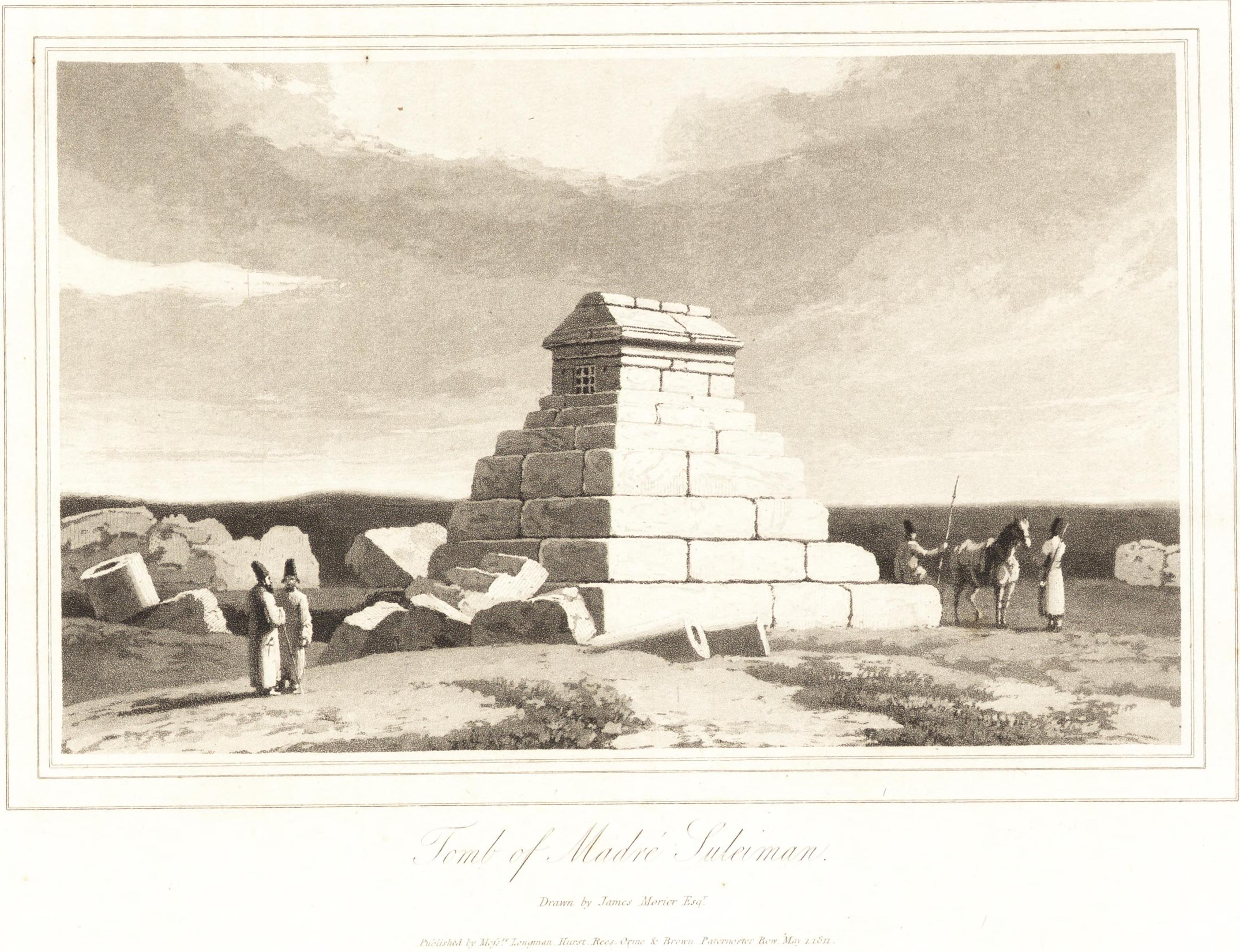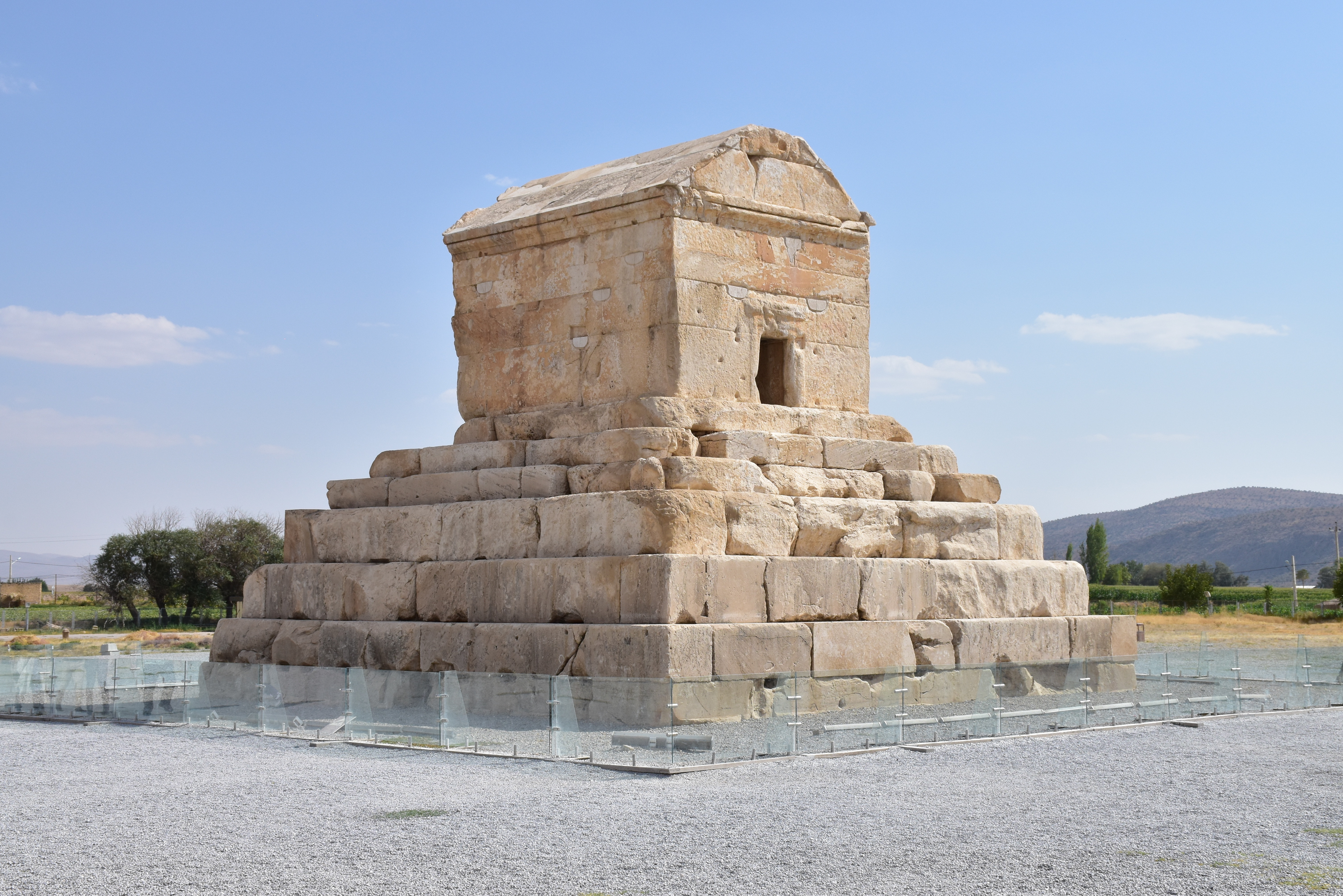|
Pasargad
Pasargadae (; ) was the capital of the Achaemenid Empire under Cyrus the Great (559–530 BC), located just north of the town of Madar-e-Soleyman and about to the northeast of the city of Shiraz. It is one of Iran's World Heritage Site, UNESCO World Heritage Sites. It is considered to be the location of the Tomb of Cyrus, a tomb previously attributed to ''Madar-e-Soleyman'', the "Mother of Solomon". It is a national tourist site administered by the Iranian culture of List of World Heritage Sites in Iran, world heritage. History Pasargadae was founded in the 6th century BCE as the first capital of the Achaemenid Empire by Cyrus the Great, near the site of his victory over the Medes, Median king Astyages in 550 BCE. The city remained the Achaemenid capital until Darius the Great, Darius moved it to Persepolis. The archaeological site covers and includes a structure commonly believed to be the mausoleum of Cyrus, the fortress of Toll-e Takht sitting on top of a nearby hill, and ... [...More Info...] [...Related Items...] OR: [Wikipedia] [Google] [Baidu] |
Cyrus The Great
Cyrus II of Persia ( ; 530 BC), commonly known as Cyrus the Great, was the founder of the Achaemenid Empire. Achaemenid dynasty (i. The clan and dynasty) Hailing from Persis, he brought the Achaemenid dynasty to power by defeating the Median Empire and embracing all of the previous civilized states of the ancient Near East, expanding vastly across most of West Asia and much of Central Asia to create what would soon become the List of largest empires#Timeline of largest empires at the time, largest empire in history at the time. The Achaemenid Empire's greatest territorial extent was achieved under Darius the Great, whose rule stretched from Southeast Europe in the west to the Indus Valley in the east. After absorbing the Median Empire, Cyrus conquered Lydia and eventually the Neo-Babylonian Empire, granting him control of Anatolia and the Fertile Crescent, respectively. He also led a major expedition into Central Asia, where his army brought "into subjection every nation wit ... [...More Info...] [...Related Items...] OR: [Wikipedia] [Google] [Baidu] |
Tomb Of Cyrus The Great
The tomb of Cyrus the Great is located in Pasargadae, which was the first capital city of his Achaemenid Empire and is now an archaeological site in the Fars Province of Iran. Prior to being identified with Cyrus the Great by the British diplomat James Justinian Morier in 1812, it was attributed to a certain "Mother of Solomon" in legendary accounts that had emerged at some point after the Muslim conquest of Iran; Morier's understanding, drawing upon the works of the German traveller Johan Albrecht de Mandelslo, was that it referred to the Arab woman Wallada bint al-Abbas ibn al-Jaz, who was the mother of Sulayman ibn Abd al-Malik () of the Umayyad Caliphate. Similar beliefs suggested to the Venetian explorer Giosafat Barbaro in the 15th century asserted that it was the resting place of Bathsheba, who was the mother of Solomon () of the Kingdom of Israel and Judah. Morier ultimately dismissed the tomb's contemporary associations as fallacious, noting that its architecture a ... [...More Info...] [...Related Items...] OR: [Wikipedia] [Google] [Baidu] |
Madar-e-Soleyman
Madar-e-Soleyman () is a city in, and the capital of, Pasargad District of Pasargad County, Fars province, Iran. It also serves as the administrative center for Madar-e Soleyman Rural District. The name means "mother of Solomon," the Biblical Bathsheba, from the tomb historically reputed to belong to her (known as the Tomb of Cyrus The tomb of Cyrus the Great is located in Pasargadae, which was the first capital city of his Achaemenid Empire and is now an archaeological site in the Fars Province of Iran. Prior to being identified with Cyrus the Great by the British diplom ... in modern times). Demographics Population At the time of the 2006 National Census, Madar-e Soleyman's population was 1,633 in 404 households, when it was a village in Madar-e Soleyman Rural District. The following census in 2011 counted 1,822 people in 513 households. The 2016 census measured the population as 1,546 people in 452 households, by which time the village had been elevated to the sta ... [...More Info...] [...Related Items...] OR: [Wikipedia] [Google] [Baidu] |
Achaemenid
The Achaemenid Empire or Achaemenian Empire, also known as the Persian Empire or First Persian Empire (; , , ), was an Iranian empire founded by Cyrus the Great of the Achaemenid dynasty in 550 BC. Based in modern-day Iran, it was the largest empire by that point in history, spanning a total of . The empire spanned from the Balkans and Egypt in the west, most of West Asia, the majority of Central Asia to the northeast, and the Indus Valley of South Asia to the southeast. Around the 7th century BC, the region of Persis in the southwestern portion of the Iranian plateau was settled by the Persians. From Persis, Cyrus rose and defeated the Median Empire as well as Lydia and the Neo-Babylonian Empire, marking the establishment of a new imperial polity under the Achaemenid dynasty. In the modern era, the Achaemenid Empire has been recognised for its imposition of a successful model of centralised bureaucratic administration, its multicultural policy, building complex infrast ... [...More Info...] [...Related Items...] OR: [Wikipedia] [Google] [Baidu] |
Achaemenid Empire
The Achaemenid Empire or Achaemenian Empire, also known as the Persian Empire or First Persian Empire (; , , ), was an Iranian peoples, Iranian empire founded by Cyrus the Great of the Achaemenid dynasty in 550 BC. Based in modern-day Iran, it was the List of largest empires#Timeline of largest empires to date, largest empire by that point in history, spanning a total of . The empire spanned from the Balkans and ancient Egypt, Egypt in the west, most of West Asia, the majority of Central Asia to the northeast, and the Indus Basin, Indus Valley of South Asia to the southeast. Around the 7th century BC, the region of Persis in the southwestern portion of the Iranian plateau was settled by the Persians. From Persis, Cyrus rose and defeated the Medes, Median Empire as well as Lydia and the Neo-Babylonian Empire, marking the establishment of a new imperial polity under the Achaemenid dynasty. In the modern era, the Achaemenid Empire has been recognised for its imposition of a succ ... [...More Info...] [...Related Items...] OR: [Wikipedia] [Google] [Baidu] |
Fars Province
Fars Province or Pars Province, also known as Persis or Farsistan (فارسستان), is one of the 31 provinces of Iran. Its capital is the city of Shiraz. Pars province has an area of 122,400 km2 and is located in Iran's southwest, in Regions of Iran, Region 2. It neighbours the provinces of Bushehr province, Bushehr to the west, Hormozgan province, Hormozgan to the south, Kerman province, Kerman and Yazd province, Yazd to the east, Isfahan province, Isfahan to the north, and Kohgiluyeh and Boyer-Ahmad Province, Kohgiluyeh and Boyer-Ahmad to the northwest. Etymology The Persian language, Persian word Pa''rs'' (), derived from the earlier form ''Pârs'' (), which is in turn derived from ' (), the Old Persian name for the Persis region. The names ''Parsa'' and ''Persia'' originate from this region. Pars is the historical homeland of the Persian people. It was the homeland of the Achaemenid Empire, Achaemenid and Sasanian Empire, Sasanian Persian dynasties of Iran, who ... [...More Info...] [...Related Items...] OR: [Wikipedia] [Google] [Baidu] |
List Of World Heritage Sites In Iran
The United Nations Educational, Scientific and Cultural Organization (UNESCO) World Heritage Sites are places of importance to cultural or natural heritage as described in the UNESCO World Heritage Convention, established in 1972. Iran accepted the convention on 26 February 1975, making its historical sites eligible for inclusion on the list. As of 2024, twenty-eight sites in Iran are included. The first three sites in Iran, Meidan Naghshe Jahan, Isfahan, Persepolis and Tchogha Zanbil, were inscribed on the list at the 3rd Session of the World Heritage Committee, held in Cairo and Luxor, Egypt in 1979. They remained the Islamic Republic's only listed properties until 2003, when Takht-e Soleyman was added to the list. The latest addition was Ecbatana, inscribed in 2024. In addition to its inscribed sites, Iran also lists more than 50 properties on its tentative list. World Heritage Sites UNESCO lists sites under ten criteria; each entry must meet at least one of the criteria ... [...More Info...] [...Related Items...] OR: [Wikipedia] [Google] [Baidu] |
Persepolis
Persepolis (; ; ) was the ceremonial capital of the Achaemenid Empire (). It is situated in the plains of Marvdasht, encircled by the southern Zagros mountains, Fars province of Iran. It is one of the key Iranian cultural heritage sites and a UNESCO World Heritage Site. The earliest remains of Persepolis date back to 515 BC. The city, acting as a major center for the empire, housed a palace complex and citadel designed to serve as the focal point for governance and ceremonial activities. It exemplifies the Achaemenid style of architecture. The complex was taken by the army of Alexander the Great in 330 BC, and soon after, its wooden parts were completely destroyed by fire, likely deliberately. The function of Persepolis remains unclear. It was not one of the largest cities in ancient Iran, let alone the rest of the empire, but appears to have been a grand ceremonial complex that was only occupied seasonally; the complex was raised high on a walled platform, with five "palac ... [...More Info...] [...Related Items...] OR: [Wikipedia] [Google] [Baidu] |
Persian People
Persians ( ), or the Persian people (), are an Iranian peoples, Iranian ethnic group from West Asia that came from an earlier group called the Proto-Iranians, which likely split from the Indo-Iranians in 1800 BCE from either Afghanistan or Central Asia. They are indigenous to the Iranian plateau and comprise the majority of the population of Iran.Iran Census Results 2016 United Nations Alongside having a Culture of Iran, common cultural system, they are native speakers of the Persian language and of the Western Iranian languages that are closely related to it. In the Western world, "Persian" was largely understood as a demonym for all Iranians rather than as an ethnonym for the Persian people, but this understanding Name of Iran, shi ... [...More Info...] [...Related Items...] OR: [Wikipedia] [Google] [Baidu] |








